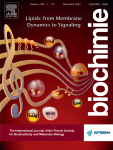 Autores: Jackson Gabriel Miyamoto, Eduardo Shigueo Kitano, André Zelanis, Pedro Gabriel Nachtigall, Inácio Junqueira-de-Azevedo, Sávio Stefanini Sant’Anna, Rogério Lauria da Silva, Patrícia Alessandra Bersanett, Adriana Karaoglanovic Carmona, Pedro José Barbosa Pereira, Solange M.T. Serrano, Maria Luiza Vilela Oliva, Alexandre Keiji Tashima.
Autores: Jackson Gabriel Miyamoto, Eduardo Shigueo Kitano, André Zelanis, Pedro Gabriel Nachtigall, Inácio Junqueira-de-Azevedo, Sávio Stefanini Sant’Anna, Rogério Lauria da Silva, Patrícia Alessandra Bersanett, Adriana Karaoglanovic Carmona, Pedro José Barbosa Pereira, Solange M.T. Serrano, Maria Luiza Vilela Oliva, Alexandre Keiji Tashima.
Abstract: Snake venoms are primarily composed of proteins and peptides, which selectively interact with specific molecular targets, disrupting prey homeostasis. Identifying toxins and the mechanisms involved in envenoming can lead to the discovery of new drugs based on natural peptide scaffolds. In this study, we used mass spectrometry-based peptidomics to sequence 197 peptides in the venom of Bothrops cotiara, including a novel 7-residue peptide derived from a snake venom metalloproteinase. This peptide, named Bc-7a, features a pyroglutamic acid at the N-terminal and a PFR motif at the C-terminal, homologous to bradykinin. Using FRET (fluorescence resonance energy transfer) substrate assays, we demonstrated that Bc-7a strongly inhibits the two domains of angiotensin converting enzyme (Ki < 1 μM). Our findings contribute to the repertoire of biologically active peptides from snake venoms capable of inhibiting angiotensin-converting enzyme (ACE), beyond current known structural motifs and precursors. In summary, we report a novel snake venom peptide with ACE inhibitory activity, suggesting its potential contribution to the hypotensive effect observed in envenomation.